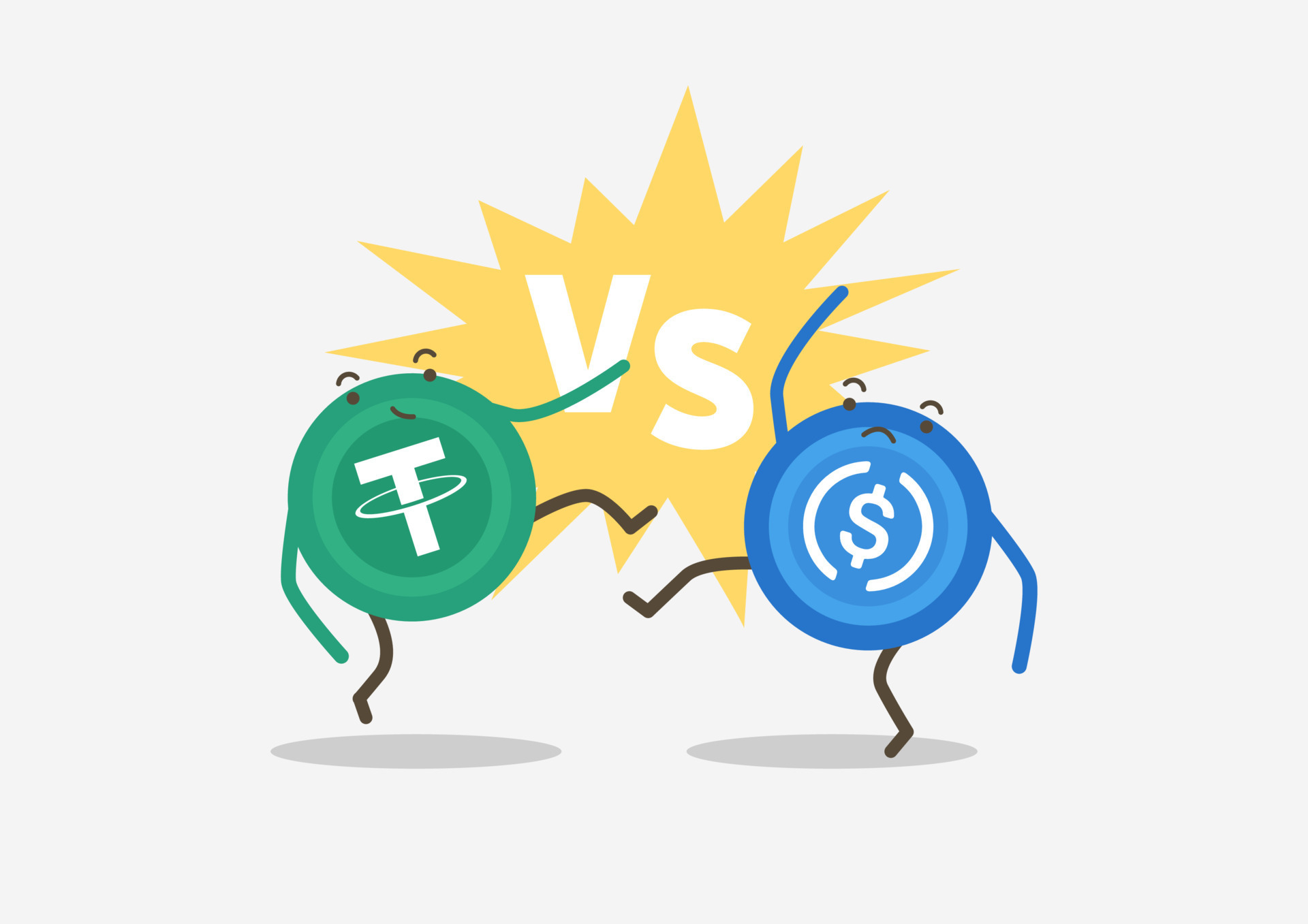In the world of crypto, two powerful stablecoins have emerged as frontrunners: USDC and USDT. But which is better? With so many factors to consider, it can be hard to know where to start.
In this article, we will explore both coins, comparing their features and benefits to determine which one reigns supreme in the crypto world. Well, look at things like transaction fees, security protocols, circulation rates, and liquidity levels so that you can make an informed decision about which coin best suits your needs. Get ready for a comprehensive comparison between USDC vs USDT – let’s dive in!
What are USDC and USDT?
USDC and USDT are two popular stablecoins in the crypto world. USDC is an Ethereum-based digital asset, backed by a reserve of U.S. dollars held in bank accounts and audited regularly for compliance with applicable laws and regulations.
On the other hand, USDT is a Tether-based cryptocurrency tied to the value of fiat currencies like the U.S. dollar or Euro. The main difference between these two coins lies in their underlying technology: while USDC utilizes the Ethereum blockchain network, USDT relies on Bitcoin’s Omni Layer protocol and its associated tokenized assets platform Tether Limited (USDt). In terms of use cases, both are used as payment methods for merchants accepting cryptocurrencies and can be exchanged easily on different exchanges.
Each coin has its advantages when it comes to market liquidity, speed of transactions, and cost-effectiveness; however, USDC provides more transparency due to its frequent audits that take place every month compared to quarterly audits for USDT making it preferable among investors seeking trustworthiness from their investments within this space.
Advantages of USDC vs USDT

When it comes to choosing a stablecoin, USDC and USDT have emerged as the two top contenders in the crypto world. Both offer the stability of value, but there are distinct advantages that each one offers over the other. USDC is an asset-backed cryptocurrency issued by regulated financial institutions and pegged 1:1 to the U.S. dollar.
Because it’s backed by actual dollars held in reserve, traders can rest assured that its value won’t fluctuate wildly as other cryptocurrencies do. It also eliminates counterparty risk associated with centralized exchanges because it is built on Ethereum blockchain technology and adheres to industry standards for compliance and transparency.
Additionally, USDC has lower transaction costs than many traditional payment methods such as wire transfers or credit cards providing convenience for users looking to move funds quickly at minimal cost without sacrificing the security or reliability of their transactions.
On the other hand, USDT is a popular stablecoin created by Tether Limited which is backed 1:1 against fiat currencies such as the U.S., euro, etc., stored in bank accounts all around the world – however, they remain untraceable making them not very transparent compared to USDC tokens which are completely traceable due to being built on Ethereum blockchain technology platform allowing full visibility into every single transaction made with them since inception date.
Furthermore, USDT has higher fees than USDC when using it for payments so if youre doing multiple transactions then you might be better off choosing USDC instead of USDT given its lower fee structure. Last but not least unlike USDT, USDC doesn’t require any third-party involvement thus significantly reducing the chances of fund loss from hacking attacks making this token a much more secure option when dealing with large amounts of money.
Disadvantages of USDC vs USDT
USDC and USDT are two of the most popular stablecoins in the world of cryptocurrencies. While both offer a reliable store of value, they do have some key differences that can be disadvantageous for those looking to use them as an alternative form of digital currency.
Firstly, USDC is backed by fiat currencies such as dollars or euros, meaning it has less volatility than USDT which is not backed by any real-world asset. Additionally, USDC offers higher levels of transparency than USDT because its issuers must publish monthly attestations regarding their reserves.
Furthermore, when using USDC there are fees associated with moving funds from one platform to another whereas no fees apply when transferring money with USDT.
Finally, while both coins provide secure storage options for users’ funds and fast transaction times compared to other digital assets like Bitcoin or Ethereum, transactions made with USDC require more confirmation time before being settled than those done with USDT.
Popularity and Usage Comparison

The comparison of USDC and USDTs popularity and usage is an important factor to consider when determining which stablecoin reigns supreme in the crypto world. With over $20 billion circulating supply, Tether (USDT) has been dominating the market for some time now, making it one of the most widely used digital assets. In contrast, USDC circulation has grown significantly in recent months; however, its total supply remains much smaller than that of USDT at around $4 billion.
When it comes to trading volume, USDT continues to lead with a significant advantage. This can be attributed to its widespread acceptance across various exchanges and platforms as well as its lower transaction fees compared to other cryptocurrencies like Bitcoin or Ethereum. On the other hand, USDC has seen a steady increase in overall trading volumes since its launch due to its integration with popular cryptocurrency wallets such as Coinbase Wallet or Trust Wallet.
A further examination reveals that despite having less trade volume than USDT on average per day, USDC still outperforms USDT when it comes to liquidity with more traders taking part in transactions involving this stablecoin. Moreover, while both coins are pegged 1:1 with the U.S dollar they differ considerably when looking at their purchase methods; you need a bank account linked directly with your exchange account if you want to buy either coin via fiat currency – meaning there could be extra verification processes involved – you do not need any type of identification if you want to acquire them through another cryptocurrency such as Bitcoin or Ethereum using decentralized exchanges like Uniswap instead – making it easier for users who value privacy above all else but also increasing their risk exposure by being exposed to price volatility before converting them into fiat currencies again afterward.
All these factors make up an interesting comparison between two leading stablecoins on today’s crypto markets; although neither one offers absolute supremacy over the other yet — only time will tell how things change from here onwards!
Conclusion
In conclusion, USDC and USDT are two of the leading stablecoin options in the crypto space. USDC has a slightly higher market cap but is backed by more fiat currencies than USDT. Meanwhile, USDT offers more transaction speed and compatibility with decentralized finance protocols.
Though both coins offer similar benefits to users, depending on their individual needs, one may be better suited for them than the other. Ultimately when it comes to choosing between USDC and USDT, it is up to each user to decide which one works best for them.


